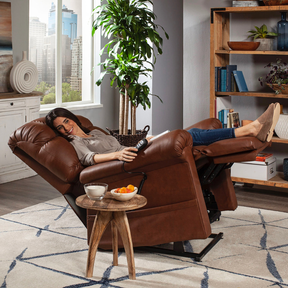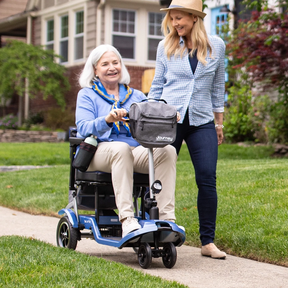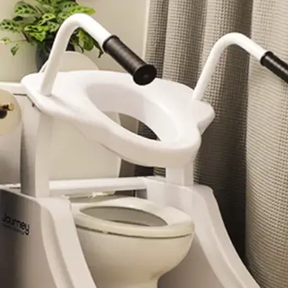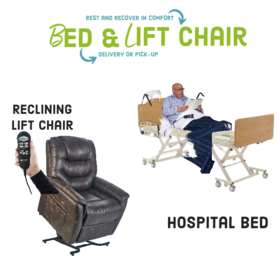Blog Effects of a Single Hinged Knee Brace in Osteoarthritis
Sat, 01/28/2023 - 15:18

The brace's hinge helps limit the knee joint's range of motion, reducing the stress on the affected area and helping to control pain. This type of brace also helps to keep the knee in the proper alignment, which can help to slow the progression of the disease.
Hinged knee braces are often recommended for individuals with moderate to severe osteoarthritis. They are typically worn during activities that stress the knee, such as walking, running, or climbing stairs. They may also be prescribed for use during the day to help manage pain and stiffness.
It's important to note that hinged knee braces are not a cure for osteoarthritis; they are designed to help manage the condition's symptoms. Consulting with a doctor is recommended to check if the hinged knee brace is the best option for you and how to wear it properly.
You can manage your discomfort by wearing a knee brace. With a mount, your weight may move away from the most damaged part of your knee, reducing your pain. A brace may result in a more comfortable walk if you wear it. A hinged knee brace can support a person with arthritis and may reduce knee cap pain, improve mobility, and increase self-confidence. It may also prevent joint dislocation and allow ligaments to heal after surgery.
The condition of osteoarthritis can cause knee damage because the cartilage cushioning the bones may erode. A situation like rheumatoid arthritis may cause pain, weakness, impaired function, and damage to the joint lining.
People with arthritis can benefit from hinged knee braces, as this article discusses their effectiveness.
Hinged knee brace
Those who suffer from either ligament injury may benefit from a hinged knee brace. A few knee injuries, including those affecting the medial collateral ligament, the ligament closest to the body's midline. In these situations, a hinged knee brace can support joint recovery.
One type of injury is an injury to the interior collateral ligament. A doctor surgically repairs the ligament when it tears, then places a hinged brace on the knee to immobilize it. In an unlocked position, it supports the knee during bending as well.
Why does it happen?
Osteoarthritis involves the entire joint, mainly affecting older people's knees. The disease is primarily a wear-and-tear type of arthritis that typically affects the knees of older people.
An unequal amount of damage to your knee can lead to it aligning imperfectly (malalignment), making you look knock-kneed or bowlegged. A knee brace can relieve pain by taking pressure off the part of your joint most affected by osteoarthritis.
As the damage progresses, this malalignment worsens. As well as helping you stand and move around with more confidence, a knee brace can help you stand without feeling like you might buckle your knee when you put weight on it.
Low-grade evidence of benefits
A 2018 study: For a better understanding of how orthoses work to treat arthritis, Trusted Source reviewed recent research. Researchers found that knee braces can significantly reduce pain and stiffness associated with knee osteoarthritis.
However, the authors noted no definitive recommendations for the best brace for knee osteoarthritis. They concluded that braces might improve people's quality of life and function.
The unproven benefit of functional braces after knee surgery
After the surgical repair of a knee ligament, scientists examined the effectiveness of functional braces. Based on a review of 15 studies, researchers concluded that available braces have no proven effect. The use of braces after surgery is limited by limited evidence, although some data suggests they offer a benefit.
Risks
Knee braces may pose the following risks:
Discomfort wearing the brace. When you first put on a knee brace, it might feel heavy, bulky, and hot. Slippage may occur if it needs to fit properly.
Skin irritation or swelling. If your knee brace does not fit well, you might experience redness and irritation under the brace. Joint swelling is also common in some people.
Lack of benefit. People with osteoarthritis should not use knee braces, as studies have been scarce, and results have varied. It is only beneficial to some. Other people report reduced pain and an increase in function.
Stiffness. Joint stiffness might arise if the braced knee acts as injured and the other knee is preferred.
How do you prepare yourself?
Your doctor can help you determine whether knee braces could help you and how likely you are to wear them regularly if you choose them.
Orthotists are professionals in designing, building, and fitting braces and other devices to help people with orthopedic problems function better. If you try a knee brace, your doctor will probably prescribe it and refer you to an orthopedist.
What you can expect from a hinged knee brace
Hinged knee braces are available in several sizes, and some designs offer the option of adjusting how much pressure they apply to your knee depending on the activity and time of day you are in. If it fits you well, you can take home an off-the-shelf brace the same day.
During your knee brace fitting
With the right fit, it may be easier to adjust to wearing a knee brace, which is what an orthodontist does during the fitting. During the fitting, they might:
Take a look at your knees. Describe your symptoms of knee arthritis and your history of knee arthritis. Wearing a knee brace may increase your ability to do certain activities.
To test your knee function:
- Walk a few paces.
- Determine your leg size by taking several measurements.
- Examine the advantages and disadvantages of off-the-shelf and custom braces.
Differentiate knee brace designs. Do you have experience with different knee braces? Which one feels most comfortable and is the easiest to use?
After your knee brace fitting
You will likely walk around to test out your knee brace with the assistance of the orthopedist after learning how to put on and take off the knee brace.
To obtain benefits from a knee brace, you should follow the instructions of your orthodontist or doctor on when to wear it. Some people only wear braces during continuous activity, like walking or playing sports. Others prefer to wear their braces throughout the day.
Bottom line
A hinged knee brace can help stabilize your knee and increase your confidence if worn consistently. Having osteoarthritis can make you feel like your knees will give out, so avoid weighting them.
Recent studies indicate knee braces are less beneficial than other braces for people with knee osteoarthritis. Some studies suggest that hinged knee braces can reduce symptoms and improve function.
Many people stop wearing knee braces because they don't get enough relief from their knee pain, get complications, such as poor fit, or don't like how the mount looks. The most effective first-line treatment for knee osteoarthritis is weight loss and exercise, especially exercises that strengthen the thigh muscles.
Tags
- contest
- event
- supplies
- design
- brand
- video
- Compression
- upright walker
- four wheel walker
- rollator
- wheelchair
- Ostomy
- elegantly
- elegantly
- accessibility
- Mobility
- knee walker rental
- knee scooter sales
- knee scooter
- post operative shoe
- anti-embolic stockings
- pain management
- cryotherapy therapy
- hot cold compress
- compression stockings
- lift chair
- wound Care
- air purifier
- fall prevention
- cushion
- oxygen therapy
- cpap, bipap
- Hospital Bed
- Life Aide
- EMS
- recovery
- splint
- knee brace
- Bathroom
- patient lift
- medical supply
- Wound dressings
- Lightweight Wheelchair
- hospital beds for sale
- sky medical supplies rentals
- compression socks
- Tegaderm Dressing
- Adult Diapers
- Rollator Walker
- Bed Wedge Pillow
- Hospital beds
- Patient Lifts and Slings
- Portable Oxygen Concentrator
- Patient Lift Slings
- knee scooter rental
- folding mobility scooter
- mobility scooter
- medical shoes
- raised toilet seat
- hospital beds for rent
- lift chair recliner
- chair lift
- electric wheelchair
- Power Lift Recliners for Elderly
- Senior Walkers
- Bedside Commodes
- whill wheelchair
- compression hose
- Whill Electric Wheelchairs
- Bariatric Wheelchair
- Recliner Chairs with Lift
- Colostomy Bag
- Crutches
- Medical Wedge Pillow
- skin barrier tape
- Post Surgery Ice Machine
- Bedside Commode
- chair lift recliners
- cane holder scooter
- lift chair prices
- drop arm commode
- rollator walker with ergonomic seats
- Hospital Bed Rental
- Wheelchair Tray
- Golden Technologies Lift Chair
- Nova GetGo Junior Rollator
- power lift recliners
- Knee Scooters and Crutches:
- stand up walker for seniors
- stand up walker as seen on TV
- Women's Walking Canes
- Knee Immobilizers
- Bed Wedge Pillow
- Medical Supply Stores
- Sit to Stand Lifts
- Grab Bars
- Compression Gloves
- incontinence bed pads
- Lift Reclining Chair
- Knee Walker Scooters
- Hernia Belt Near You
- Mobility Scooter Stores Near Me
- Folding Knee Walker
- Oxygen Concentrator Store
- Inogen Battery
- Electric Bed Frames
Related Posts
Get weekly articles in your inbox on the latest medical supply news, exclusive deals, and helpful health tips.
Mon, 11/21/2022 - 18:27
Key aspects to consider before buying Deluna lift chairs from Golden

Those who have trouble getting in and out of a lounger frequently turn to lift
Thu, 06/29/2023 - 03:06
Sky Medical Supplies Featured products
Rental Hospital Bed (Advanced)






